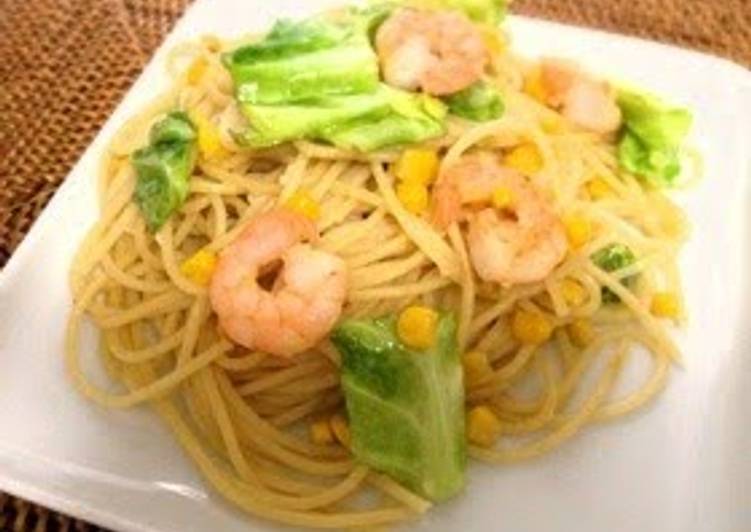Recipe: Appetizing Shrimp and Cabbage Pasta with Shio-Koji

Recipe: Appetizing Shrimp and Cabbage Pasta with Shio-Koji Delicious, fresh and tasty.
Shrimp and Cabbage Pasta with Shio-Koji. Shio koji is becoming a really popular ingredient in Japan. You can make your own shio koji at home with this recipe. Japanese Ingredient Highlight: Shio koji (塩麹, 塩糀).
Apply Shio Koji to cut vegetables such as cucumber, Daikon radish, eggplants or cabbage, and rub them.
Leave it in a cool place for hours and serve it.
Food with Shio Koji is very easy to get burnt.
You can cook Shrimp and Cabbage Pasta with Shio-Koji using 9 ingredients and 4 steps. Here is how you cook that.
Ingredients of Shrimp and Cabbage Pasta with Shio-Koji
-
You need 200 grams of Spaghetti.
-
It’s 8 of Shrimp.
-
It’s 1 of leaf Cabbage.
-
It’s 30 grams of Corn.
-
Prepare 1 tbsp of Shio-koji.
-
You need 1 of Olive oil.
-
It’s 1 of Salt.
-
Prepare 1 clove of Garlic.
-
Prepare 1 of Soy sauce.
I recommend you stay with the food while cooking.
When you use a frying pan, you may have too much.
Jamaican Cabbage and Shrimp - A quick stir fried cabbage seasoned with aromatic spices and topped with sauté shrimp.
A Delicious side dish to accompany any meal.
Shrimp and Cabbage Pasta with Shio-Koji step by step
-
Cook the spaghetti..
-
Add the olive oil, and sliced garlic into a frying pan. Sauté the garlic until fragrant..
-
Add the shrimp, and stir-fry until cooked through. Add the chopped cabbage, and corn, and continue stir-frying. Add the shio-koji as well..
-
Add the freshly cooked spaghetti, and adjust the flavor with soy sauce..
Sauteed Cabbage - one of the most delicious cabbage recipes made with garlic, juicy shrimp and shredded cabbage in a mouthwatering Asian sauce.
Best of all, cabbage goes well with everything!
No matter what protein you cook up, rest assured that this cabbage recipe will be a delicious pairing.
Koji is also used to make shio koji or koji salt, an umami-packed seasoning that's slowly gaining popularity among chefs and home cooks alike.
It's made by simply combining koji rice, salt, and water and allowing the mixture to ferment for a couple of weeks at room temperature to become a thick.

